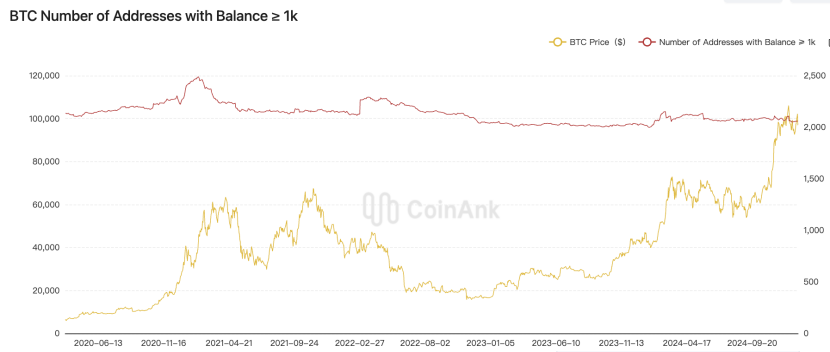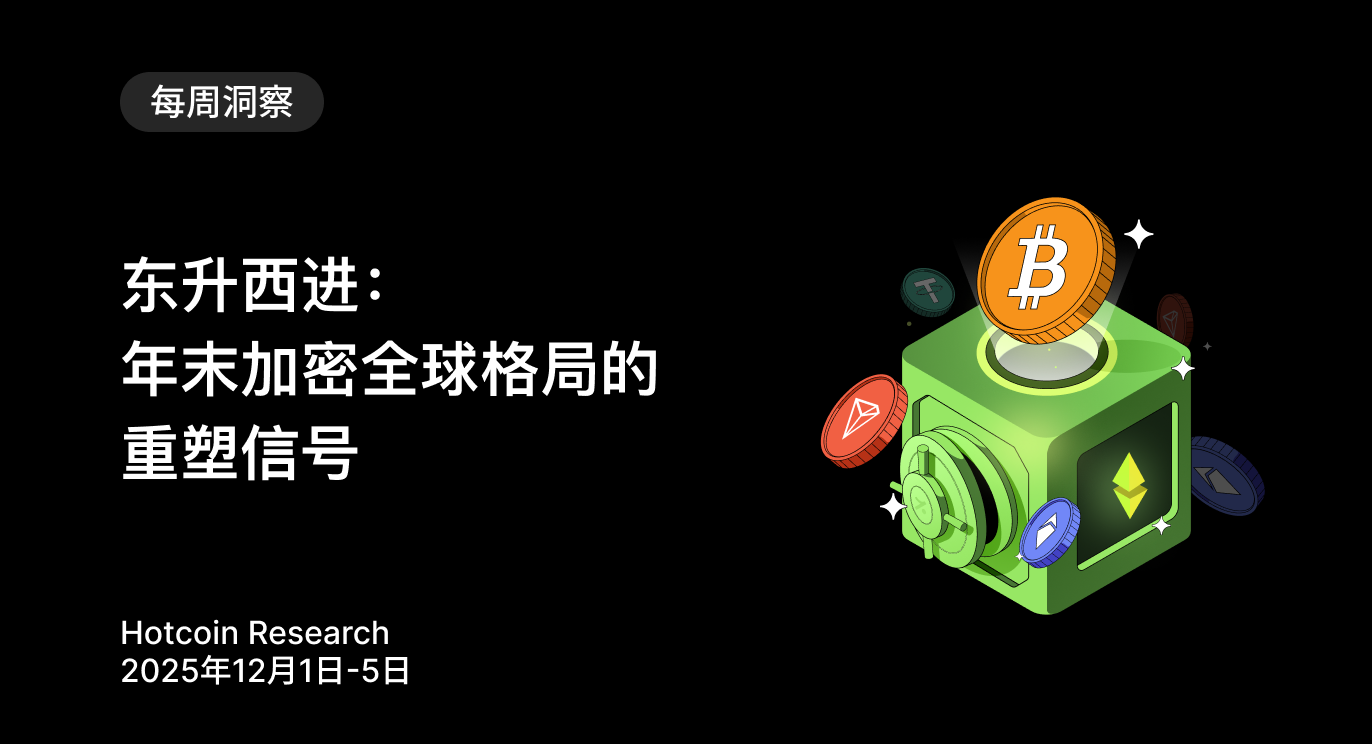Federal Reserve Officials Comment on Interest Rate Policy and Inflation Levels; BTC Whales Sell 30,000 Coins, Facing Short-Term Impact from FTX Payouts
Macro Interpretation: Recently, the cryptocurrency market has shown a pattern of multiple games, with expectations of a shift in the Federal Reserve's monetary policy, a global race for artificial intelligence infrastructure, and the deepening role of crypto assets in political lobbying forming a complex network of interactions. We will analyze these variables' transmission mechanisms on Bitcoin's value center by combining the latest on-chain data, geopolitical technology dynamics, and the evolution of regulatory policies.
At the macroeconomic level, the Federal Reserve's monetary policy is facing the challenge of a "triple paradox." MainSky Asset Management points out that the current federal funds rate is significantly above the neutral rate, but the inflation from tariff policies may create a policy hedge against a weak job market. Fidelity's bond observations corroborate this judgment: the futures market pricing in a 25 basis point rate cut in September is at odds with the inflationary pressures from tariffs imposed by the Trump administration. This policy dilemma has led to a divergence in Bitcoin's anti-inflation narrative—if a rate cut occurs, it may activate institutional allocation demand, while the stagflation risk from tariffs could enhance its safe-haven attributes. Notably, Coinank's on-chain data has detected that whale addresses sold over 30,000 BTC within 72 hours, coinciding with the recent market corrections after breaking the $100,000 mark, indicating that "smart money" is hedging risks through on-chain behavior.
The geopolitical technology race is injecting new variables into the crypto market. The AI infrastructure agreements signed between the U.S. and the UAE and Saudi Arabia involve not only a $45 billion investment in data centers but also a blockchain-based computing power verification mechanism. The combination of abundant clean energy in the Middle East and the U.S.'s chip manufacturing advantages may give rise to a new "AI + Web3" economic ecosystem. This trend is already evident in the Solana ecosystem, where the chain's daily revenue reached $7.9 million on May 13, surpassing the total of all L1/L2 chains, with AI data processing contracts contributing over 40% of the fee revenue. Interestingly, the stablecoin market is also showing structural changes, with USDC's trading volume on the Ethereum chain exceeding $500 billion, while the expansion of enterprise-level application scenarios (such as Meta's payment solution testing) has driven an 83% increase in weekly trading volume for algorithmic stablecoins like DAI. This "institutional entry - technological iteration" spiral is creating richer application scenarios for BTC as a fundamental value anchor.
The wave of politicization is reshaping the valuation system of crypto assets. The "Washington revolving door" phenomenon revealed by The Economist is quite alarming: the market capitalization of the $TRUMP token has surpassed $320 million, backed by a political lobbying network of over 20 cabinet members holding digital assets. While this "regulatory capture" phenomenon has temporarily stimulated the meme coin market (the altcoin season index rose from 25 to 43), it may exacerbate policy uncertainty—the SEC's latest broker rules, although described by Commissioner Peirce as "gradual progress," have not resolved core issues such as physical ETF custody. More significantly, the $5 billion payout plan for FTX creditors resonates with the liquidity inflow from Bitcoin ETFs, and this "old capital exit - new funds entering" replacement process may lead to high volatility characteristics for BTC in June and July.
From a market cycle perspective, we are currently in a phase of overlapping "macroeconomic policy shift - technological innovation breakthrough - regulatory framework formation." Matrixport's proposed technical target of $106,000 needs to be combined with three verification indicators: first, whether the U.S. tech stock earnings season can sustain the AI concept's popularity, forming a "Nasdaq-BTC" linkage effect; second, the scale changes of Middle Eastern sovereign funds entering the crypto market through stablecoin channels; and finally, the regulatory arbitrage space generated after the implementation of the EU's MiCA framework. It is worth noting that the on-chain anomalies triggered by whale selling may trigger a chain reaction in the derivatives market. CoinAnk data shows that the perpetual contract funding rate is nearing its early-year peak, indicating an increase in market vulnerability.
Looking ahead, Bitcoin may exhibit a "first suppression, then rise" trend in the third quarter. In the short term, influenced by the Federal Reserve's policy swings and the political donation window of the U.S. elections, prices may test the $55,000 support level; however, with the implementation of AI infrastructure agreements, the expansion of institutional stablecoin application scenarios, and the return of FTX payout funds, a breakthrough of previous highs is expected in August and September. For ordinary investors, it is essential to focus on three signal nodes: the revision of June's non-farm payroll data affecting rate cut expectations, the capital migration triggered by Solana ecosystem AI project airdrops, and the SEC's regulatory stance changes regarding staking service providers. In this market environment where bullish and bearish factors intertwine, BTC is quietly evolving from "digital gold" to "smart economic infrastructure," and its value discovery mechanism is thus endowed with more complex contemporary connotations.

BTC Data Analysis:
CoinAnk's on-chain data has detected that whale addresses sold over 30,000 BTC within 72 hours, coinciding with the recent market corrections after breaking the $100,000 mark, indicating that "smart money" is hedging risks through on-chain behavior.
We observed on Twitter that large accounts sold over 30,000 Bitcoins (approximately $3.12 billion) during the two technical pullbacks following BTC's first breakthrough of $100,000. This round of selling shows structured characteristics: 64% of the selling pressure is concentrated in custody addresses, and 27% was completed through dark pools, indicating that professional investors are using composite tools to hedge high-level risks rather than simply exiting the market.
Whale behavior releases three market signals: first, the Bitcoin futures premium rate (annualized at 12%) is diverging from the spot price, suggesting that the derivatives market is building up potential volatility; second, net inflows to exchanges surged to an 18-month peak, but the market capitalization of stablecoins grew by 3.7%, forming a new paradigm of long-short hedging; third, the miner position index (MPI) has dropped to -0.93, the lowest since June 2023, indicating that supply-side selling pressure may intensify. Historical data shows that when the weekly selling volume exceeds 0.5% of the circulating supply (currently at 0.16%), it often triggers a mid-term adjustment of around 15%. However, this round may exhibit a "resistance-style topping" characteristic due to continuous institutional ETF accumulation (with an average net inflow of $120 million per day), and small to mid-cap tokens may face more severe liquidity siphoning impacts.
免责声明:本文章仅代表作者个人观点,不代表本平台的立场和观点。本文章仅供信息分享,不构成对任何人的任何投资建议。用户与作者之间的任何争议,与本平台无关。如网页中刊载的文章或图片涉及侵权,请提供相关的权利证明和身份证明发送邮件到support@aicoin.com,本平台相关工作人员将会进行核查。




